Amazon SEO: The Ultimate Guide To Amazon Keyword Research
If your goal is to increase your rankings on Amazon, you’ve come to the right place! This is the ultimate step-by-step guide to Amazon SEO using Keyword Research.
Optimizing for product ranking on Amazon is in many ways similar to optimizing content for organic search results. Both the situations involve the use of algorithms designed to provide the user the most relevant and best product/information.
The similarities between ecommerce and organic search doesn’t stop there. When it comes to Amazon keyword strategy, you can think on the same lines as doing search engine SEO. Amazon is a search engine, and like any other search engine, it indexes information and considers a number of factors to determine who lands where in the product search results.
In this guide, we’ll explain how Amazon ranking algorithm works, why keywords are important for your success on Amazon. Then we’ll share some Amazon keyword tips you can use to conduct better Amazon keyword research and where and how to utilize these keywords.
What’s with the Search Algorithm?
Amazon’s Search Algorithm is called A9. While A9 has the job of ranking products in search results, Amazon is a marketplace and its ultimate goal is to sell stuff.
It is therefore no surprise that the most relevant, high-converting products win the top spots. A high-converting product would actually convince people to buy after they’ve clicked through to the product details page.
In the rest of this Blog Post we will focus on the points that are more relevant from an Amazon SEO standpoint.
There are three parties to every transaction.
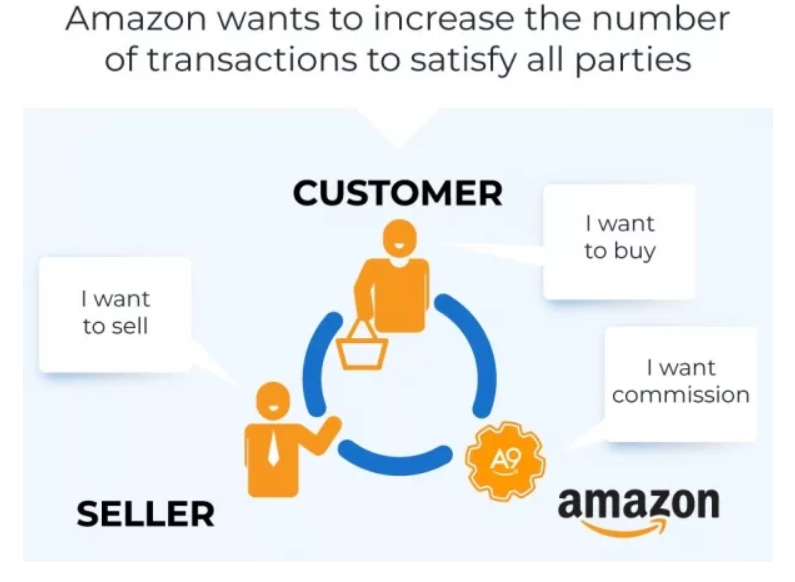
Amazon’s goal is to increases the number of transactions. To achieve this, Amazon places the product that shoppers are most likely to buy on rank #1, the second most likely on rank #2, and so on — for every single search query.
This process ranks all products by purchase likelihood. Amazon determines the purchase likelihood not just for every product, but for every combination of product and search query.
The A9 algorithm is created to do this job and it follows a two-step process.
Step1: Keywords determine if your product ranks on Amazon at all
In the first step, Amazon filters out all products that are not relevant to the customer search query — by looking at the keywords.
This step is important because it drastically reduces the number of products that Amazon needs to sort by purchase likelihood.
Step 2: Performance determines how High Your Product Ranks on Amazon (On Which Position)
In the second step, Amazon determines the purchase likelihood for the remaining products and ranks them in a specific order (a.k.a the Amazon ranking). To do this, Amazon looks at the performance of the products.
Performance is measured by looking at the CTR (click-through-rate in search result), CR (conversion rate on the product page), and especially sales. These are significant KPIs for Amazon as they represent the steps that users need to take to buy a product.
Amazon looks at these KPIs on a keyword-specific level: an iPhone, for example, will have different CTRs, CRs, and sales for the keywords “iphone” and “smartphone”.
To actively increase your CTR, CR, and sales and improve your rankings you can use a variety of levers, such as product images, copy, review management, and Amazon PPC.
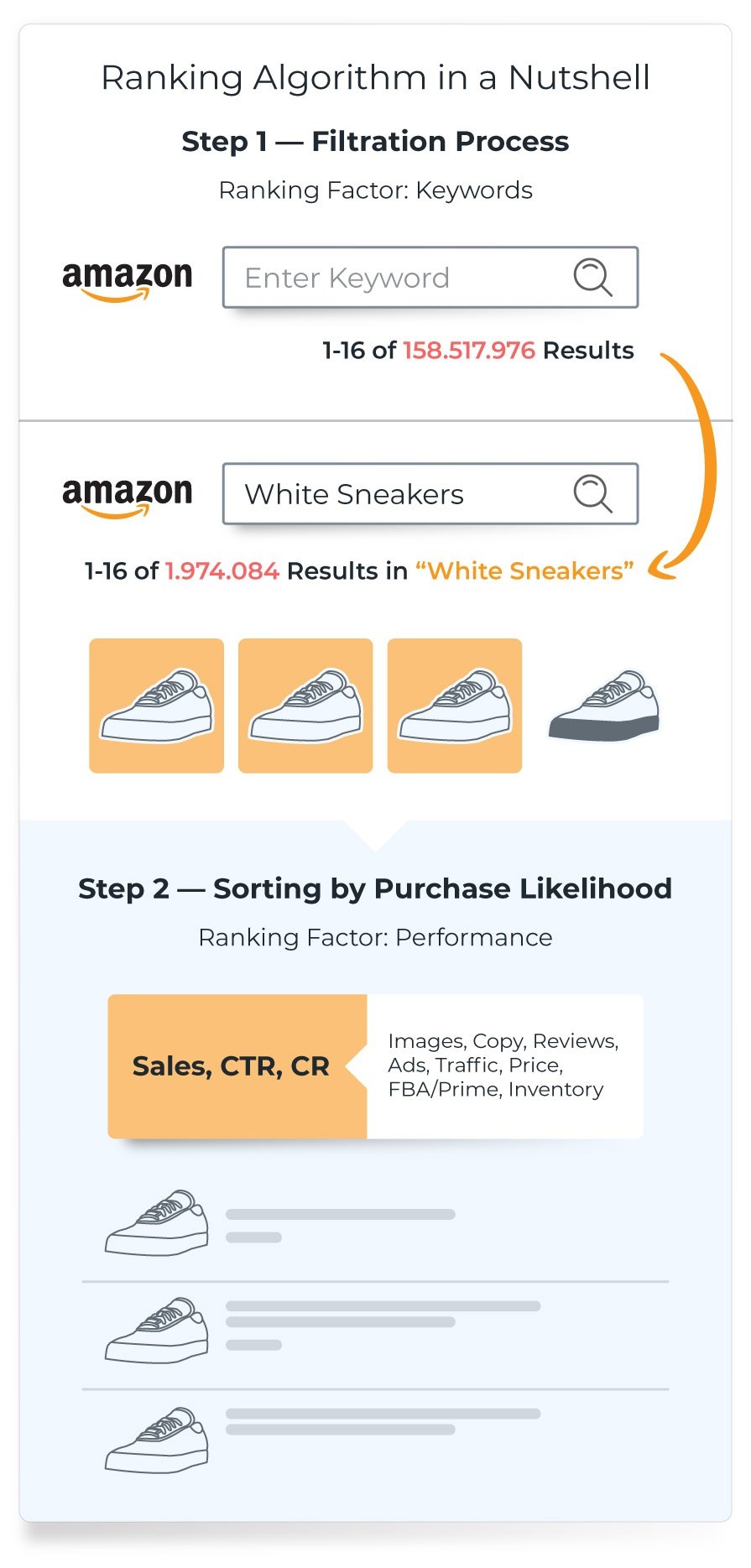
Step1: Keywords determine if your product ranks on Amazon at all
In the first step, Amazon filters out all products that are not relevant to the customer search query — by looking at the keywords.
This step is important because it drastically reduces the number of products that Amazon needs to sort by purchase likelihood.
Step 2: Performance determines how High Your Product Ranks on Amazon (On Which Position)
In the second step, Amazon determines the purchase likelihood for the remaining products and ranks them in a specific order (a.k.a the Amazon ranking). To do this, Amazon looks at the performance of the products.
Performance is measured by looking at the CTR (click-through-rate in search result), CR (conversion rate on the product page), and especially sales. These are significant KPIs for Amazon as they represent the steps that users need to take to buy a product.
Amazon looks at these KPIs on a keyword-specific level: an iPhone, for example, will have different CTRs, CRs, and sales for the keywords “iphone” and “smartphone”.
To actively increase your CTR, CR, and sales and improve your rankings you can use a variety of levers, such as product images, copy, review management, and Amazon PPC.
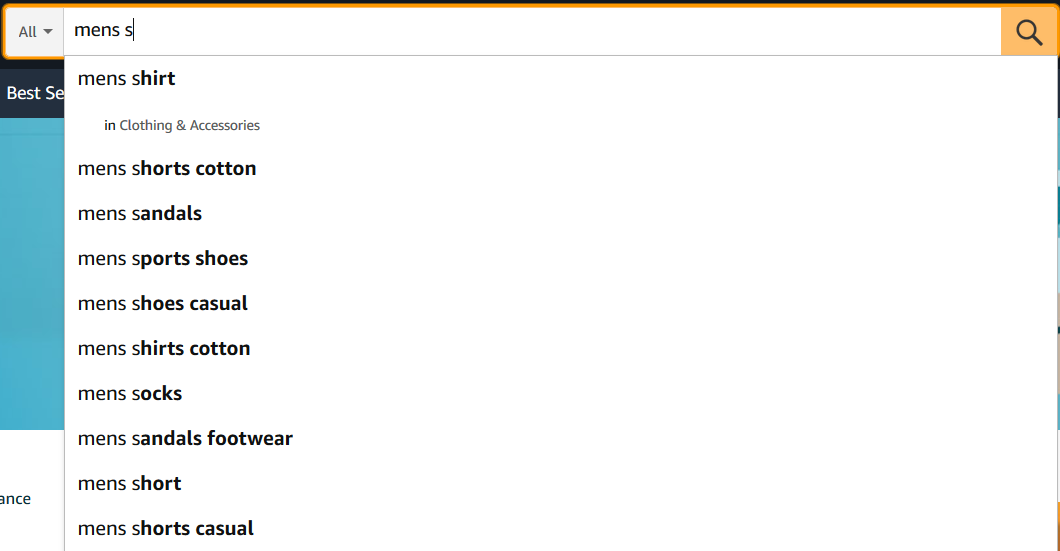
How to Conduct Amazon Keyword Research
Amazon Autocomplete
When you enter a keyword in the Amazon search box, autocomplete suggests search terms that Amazon customers use frequently.
Sponsored Product Ads allow a business to advertise products based on keywords.
Sponsored product ads have the highest click-through rates and sales conversion. They are highly beneficial because they intermix with organic results.
To set up Sponsored Product ads, select the product you want to promote, choose the keyword term, and allocate a budget. Upon doing this, Amazon will target your sponsored ads automatically to the suitable audience.
The key to getting a high performing product ad is to do your keyword research right, and target the right keywords.
Research shows that many businesses have experienced better sales with Amazon Sponsored Product ads than Google AdWords. Moreover, they are three times cheaper than Google CPCs.
Headline Search Ads
Competitor Listings
Analyse your competitors’ listings to find more relevant keywords.
To do this, enter one of the main keywords for your product in the Amazon search and analyse the top products in the search result.
Customer Reviews
Take a close look at the reviews shoppers have left on your products and other similar products. You will discover the exact terms buyers use to describe your product.
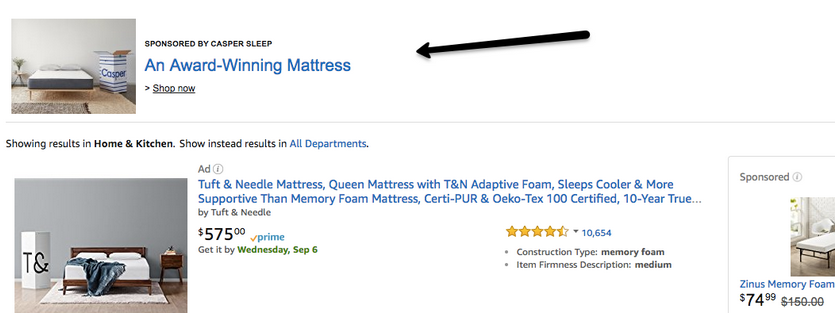
Headline Search Ads
Competitor Listings
Analyse your competitors’ listings to find more relevant keywords.
To do this, enter one of the main keywords for your product in the Amazon search and analyse the top products in the search result.
Customer Reviews
Take a close look at the reviews shoppers have left on your products and other similar products. You will discover the exact terms buyers use to describe your product.

Sonar — The Free Amazon Keyword Research Tool
Sonar by Sellics is a free keyword research tool designed specifically for Amazon. Sonar contains a database of millions of real Amazon search queries. Type in anything to find a list of matching keywords, then download and use them for your Amazon SEO.
How to Add Keywords to Your Amazon Product Listing
The first step is done, you have identified the relevant keywords, now how do you use them?
Since a product listing must contain the relevant keyword for the product to appear in Amazon’s search results, the most basic rule of keyword optimization is straightforward:
Include all relevant keywords in your listing.
The next important question is: Where should you put the keywords?
Amazon’s A9 algorithm looks at the keywords in various fields in your product listing to determine if your product can show up for a shopper’s search term. If your product can show up in search results for a specific keyword, then your product is indexed for this keyword.
Let’s take a closer look at how Amazon treats the keywords in each of those fields in your product listing.
- Product Title
The title of your product is pretty important to its success in the Amazon search results. From a keyword perspective, it’s probably the most important part of your listing.
Think about your behaviour as an Amazon consumer for a moment. Normal people look for shortcuts all the time. When shopping on Amazon, that means scanning product titles—often only the first part of product titles—in search of the one most relevant to the consumer’s needs.
Would you read this Title? Probably not, so don’t over stuff your Title.
Put your most important keywords in your product title, and put your very important keywords at the beginning of your product title.
Brand name. Product type. Key Features. Size. Colour. Quantity.
These are what consumers scan for. Make their lives easy.
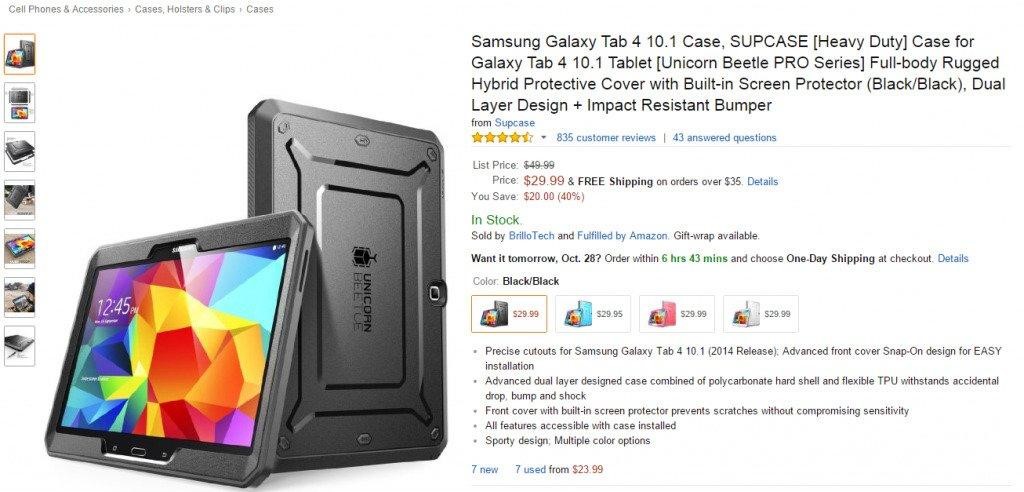
- Product Title
The title of your product is pretty important to its success in the Amazon search results. From a keyword perspective, it’s probably the most important part of your listing.
Think about your behaviour as an Amazon consumer for a moment. Normal people look for shortcuts all the time. When shopping on Amazon, that means scanning product titles—often only the first part of product titles—in search of the one most relevant to the consumer’s needs.
Would you read this Title? Probably not, so don’t over stuff your Title.
Put your most important keywords in your product title, and put your very important keywords at the beginning of your product title.
Brand name. Product type. Key Features. Size. Colour. Quantity.
These are what consumers scan for. Make their lives easy.
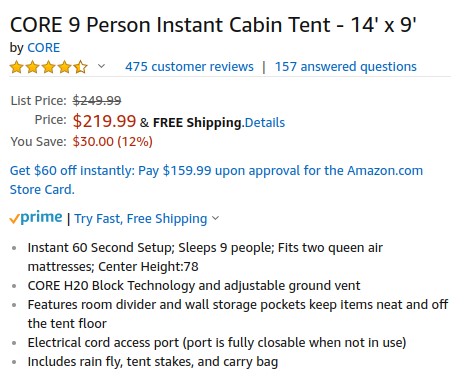
- Product Details Page
The product details page is your opportunity to outline all the best features and benefits of your product in a series of concise bullet points.
It’s also the place to use the keywords you couldn’t fit in the product title.
Product details optimization is important for a couple of reasons. Primarily, this is a great chance to nudge the prospect closer to clicking “Add to Cart.” Your outstanding product title brought them here, and now your highly informative bullet points will help secure the conversion.
Remember that product conversion rate has a huge influence on the order of Amazon search results. If you slack on your product details page, your bounce rate will be very high, and you’ll fall down the search results.
You also need to optimize your product details page because A9 will index your keywords and use them to inform the order of the search results. The logic here is no different from the logic behind your product title – you’re using keywords that make your product relevant to the queries prospective customers are searching.
3.Amazon keywords and your seller account
Perhaps you’ve heard of “hidden keywords.” Maybe you’ve heard about “search terms.” Each is a reference to the keywords you’re permitted to enter at the backend of your Amazon seller account.
Basically, search terms/hidden keywords are your opportunity to give Amazon more information about your product, it’s the information consumers won’t see. To draw a parallel to content creation, alt text allows you to give Google more information about an image to help with indexation.
A hidden keyword is a lot like alt text—but for a product rather than an image.
Go forth and succeed!
With the right Amazon keyword research strategy, you’ll make your products visible to more relevant, high-value prospects than ever before. With well-optimized product titles and product details pages, you’ll turn that boosted visibility into clicks and conversions at an impressive rate.
And it’s a positive feedback loop, too. A good keyword research ethic yields higher visibility. Higher visibility and excellent product titles yield more clicks. More clicks and outstanding product details pages yield more conversions. More conversions yield higher search rankings, and on and on we go.
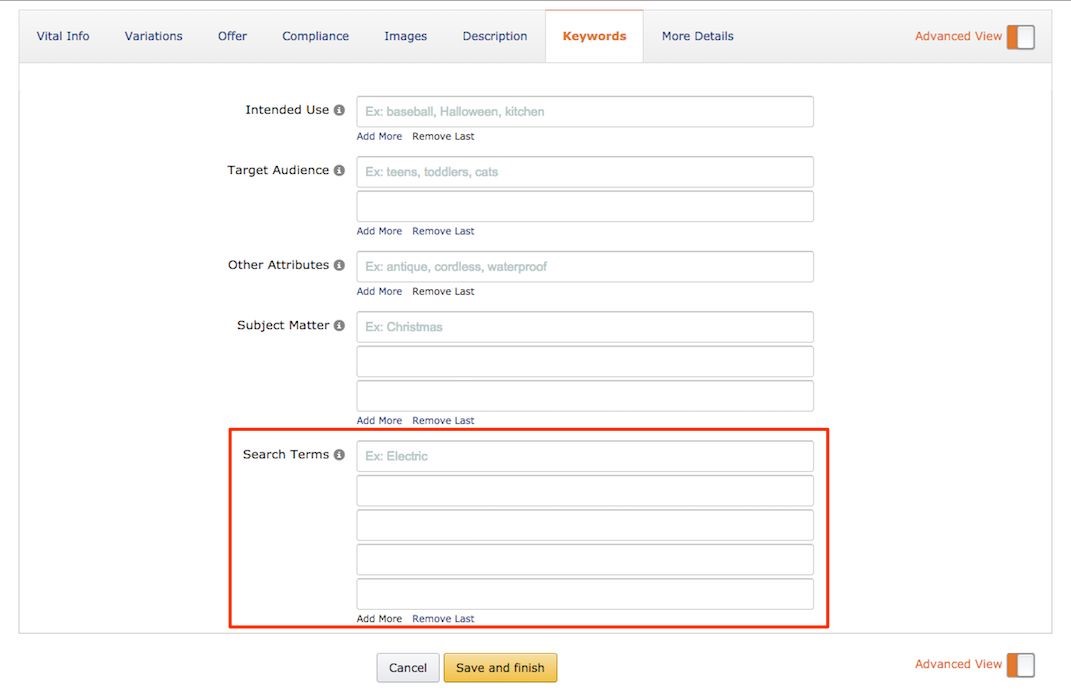
3.Amazon keywords and your seller account
Perhaps you’ve heard of “hidden keywords.” Maybe you’ve heard about “search terms.” Each is a reference to the keywords you’re permitted to enter at the backend of your Amazon seller account.
Basically, search terms/hidden keywords are your opportunity to give Amazon more information about your product, it’s the information consumers won’t see. To draw a parallel to content creation, alt text allows you to give Google more information about an image to help with indexation.
A hidden keyword is a lot like alt text—but for a product rather than an image.
Go forth and succeed!
With the right Amazon keyword research strategy, you’ll make your products visible to more relevant, high-value prospects than ever before. With well-optimized product titles and product details pages, you’ll turn that boosted visibility into clicks and conversions at an impressive rate.
And it’s a positive feedback loop, too. A good keyword research ethic yields higher visibility. Higher visibility and excellent product titles yield more clicks. More clicks and outstanding product details pages yield more conversions. More conversions yield higher search rankings, and on and on we go.




